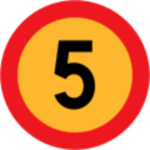It will be necessary as an elementary school teacher to teach fractions within a math class. One aspect of dealing with fractions will be in finding equivalence of fractions with unlike denominators. In order to teach this concept, students will need to know certain things about fractions. First of all, students will need to know what fractions are, which they are a way of counting parts of a whole or parts of a group. Next, students will need to know how to read or identify parts of a fraction. Also, students will need to be very familiar with the multiplication facts from zero through twelve and the corresponding division facts. By the fourth grade, students will already have been introduced to fractions and how to identify them.
In order to present the idea of equivalent fractions, teachers will need to use manipulatives or visual aids. This will help young students to understand equivalent fractions to be that even though two fractions have different names, they are still the same amount. An activity to introduce is showing overhead projector fraction bars of different colors placed next to each other. First a teacher would show the fraction one half in red and next to it would be placed the fraction two-fourths in blue. Students would see that for the fraction one half there are two parts and for two-fourths there are four parts. And yet they are both the same size and shape. Then the teacher would place other fraction bars like one third and three-sixth next to the one half bar and ask the class if those fractions are all the same. And it would be important to include a non-equivalent fraction into the lesson because students need to see what it means to not be equivalent. Next, the teacher will have students work together to find equivalent fractions from blocks they are given. Students who understand the concept can help students who are still a little unsure. And it will also give students an opportunity that need more hands on practice to work with manipulatives for better understanding.
The next activity will encourage students to discover and find equivalent fractions on their own. The teacher will give students a key fraction for example one third on a circle as a model on a small sheet of paper. Then the teacher will give the students blank circles like the key fraction but divided into different parts. The teacher instructs students to color in different blank circles to match the key circle. Then the teacher tells students to identify the fraction they have colored in. To check, the teacher will tell students to overlap the fraction they colored to the key fraction they were given. If the two fractions are a match then the fractions are equivalent. Next, the teacher has the students to write out the fractions side by side and examine the relationships between the two. From there, students will start to see a pattern between different fractions that are equivalent.
The teacher will then work toward having students understand that concrete manipulatives showing fractions can now be represented on paper-and-pencil problems. The teacher explains that the pattern between equivalent fractions is based on counting by multiples. It is also based on knowing and using the basic multiplication facts. The teacher shows students that in order to find an equivalent fraction they should simply use a number other than zero or one and multiply it by both the numerator and the denominator. Next, the teacher explains that equivalent fraction problems will sometimes ask for missing parts. For example, 3/10 =6/? The teacher explains that in order to solve for the missing, you will have to determine 3 times (what) equals 6. Or divide 3 into 6. From there, you take that answer and multiply it by 10 to get the answer 20.Then the teacher introduces the process of cross-multiplying to determine if fractions are equivalent to each other. It is explained that if two fractions are presented like ½ and 5/10, then you multiplying 1 times 10 and then multiply 5 times 2 then the answers should be the same. In the case of this example the two fractions are equivalent to each other because the answer to both multiplication problems is 10. In a second example if there are fractions ¾ and 2/12 and you multiply 3 times 12 and 2 times 4, these answers are not the same and so these fractions are not equivalent to each other. This is because the answers to the multiplication problems are 36 and 8.
Once the lesson is taught, the teacher will give students practice questions and problems to further secure their understanding of equivalent fractions. The following problems are examples teachers can use.
1.) Write an equivalent fraction from this fraction: 4/9.
2.) Write an equivalent fraction from this fraction: 6/8.
3.) Write an equivalent fraction from this fraction : 7/12
4.) Are these two fractions equivalent 5/7 and 3/10?
5.) Are these two fractions equivalent 2/3 and 4/6?
6.) Are these two fractions equivalent 3/8 and 9/15?
7.) Find the missing number 1/5 = ?/30
8.) Find the missing number 6/54 = ?/36
9.) Find the missing number 3/9 = ?/27




